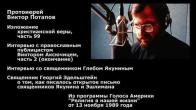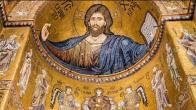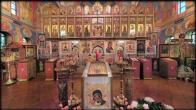You are here
Sanctified Bread
Bread occupies a special place in our lives. It symbolizes all food as well as the labor necessary to obtain it. As God once told Adam, "In the sweat of thy face shalt thou eat bread" (Genesis 3:19).
In bread there is religious symbolism. The Lord Jesus Christ called Himself the "bread of life" (John 6:51), and said "if any man eat of this bread, he shall live forever..." (John 6:51). Finally, He allowed bread, which [in being of organic composition] is related to human flesh, to be transubstantiated in the Mystery of the Holy Eucharist into His Body. "Jesus took bread, and blessed it and brake it, and gave it to the disciples and said "Take, eat; this is my body..." (Matthew 26:26). Bread, composed of many grains, personifies the Church. The plurality of its members notwithstanding, it is One. Besides the Bread of the Eucharist, the Orthodox Church has several forms of sanctified bread.
The prosphoron (offering, Greek). This is a baked white yeast-raised bread made of wheat flour with which holy water has been mixed. Its name stems from the early Christian custom of bringing bread from home for use in the Eucharist. It consists of two round parts, representing the two natures of Christ. A representation of the Cross is stamped on the upper part. Prosphora may also bear images of the Mother of God or the saints.
During the Divine Liturgy, the Lamb, the portion of bread which later will be transubstantiated into the Body of Christ, is removed in a special rite from one of the prosphora, known as the "lamb" prosphoron. Pieces are removed from other, smaller prosphora, in commemoration of the members of the Earthly and Heavenly Church. At the close of the Liturgy, these particles are placed into [the Chalice with] the Blood of Christ. Small prosphora are for those who have offered lists of commemorations to be read in the Altar. Pieces of the prosphoron from which the Lamb was taken are called antidoron (instead of the Gifts, Greek). According to the ustav, they are to be consumed by those who have not communed of the Holy Mysteries.
Artos (yeast-risen bread, Greek) is bread which is blessed on the night of Pascha. Throughout Bright Week, the artos, a symbol of the Risen Christ, remains on an analogion before the Royal Doors of the Altar, and is carried in the daily Paschal Processions of the Cross. On Bright Saturday, following the reading of a special prayer, it is broken into pieces and distributed to the faithful. In pious folk custom, the Artos and the Holy Water blessed on Theophany have been held to be, for those who are dying without the possibility of Communion, a possible substitute for the Holy Gifts.
Prosphora, artos, and antidoron are to be eaten on an empty stomach, and with prayer. Sanctified bread must be kept in a clean container, apart from other food products. According to tradition, the artos is divided into little pieces, to be consumed over the course of the year, from Pascha to Pascha.
Another form of sanctified bread is that which is distributed to the faithful during the Vigil on the eves of great feasts. In times past, evening services were quite lengthy, and during the services Christians would consume bread in order to keep up their strength. Now, although the duration of services has been shortened, this custom has been retained.
From the book Fundamentals of Orthodoxy
Prayer Before Consuming Prosphora and Holy Water
O Lord my God, may Thy holy gift and Thy holy water be unto the enlightenment of my mind, unto the strengthening of my spiritual and physical powers, unto the health of my soul and body, unto the taming of my passions and weaknesses, according to Thy limitless mercy, through the prayers of Thy Most-pure Mother and of all Thy Saints. Amen.
Relics in cathedral - monthly calendar
| S | M | T | W | T | F | S |
|---|---|---|---|---|---|---|
|
|
|
|
|
|
|
1
|
|
2
|
3
|
4
|
5
|
6
|
7
|
8
|
|
9
|
10
|
11
|
12
|
13
|
14
|
15
|
|
16
|
17
|
18
|
19
|
20
|
21
|
22
|
|
23
|
24
|
25
|
26
|
27
|
28
|
|
PARISH LIFE
Address of our Cathedral
While all the materials on this site are copyrighted, you may use them freely as long as you treat them
with respect and provide attribution on the Russian Orthodox Cathedral of St.John the Baptist of Washington DC.









